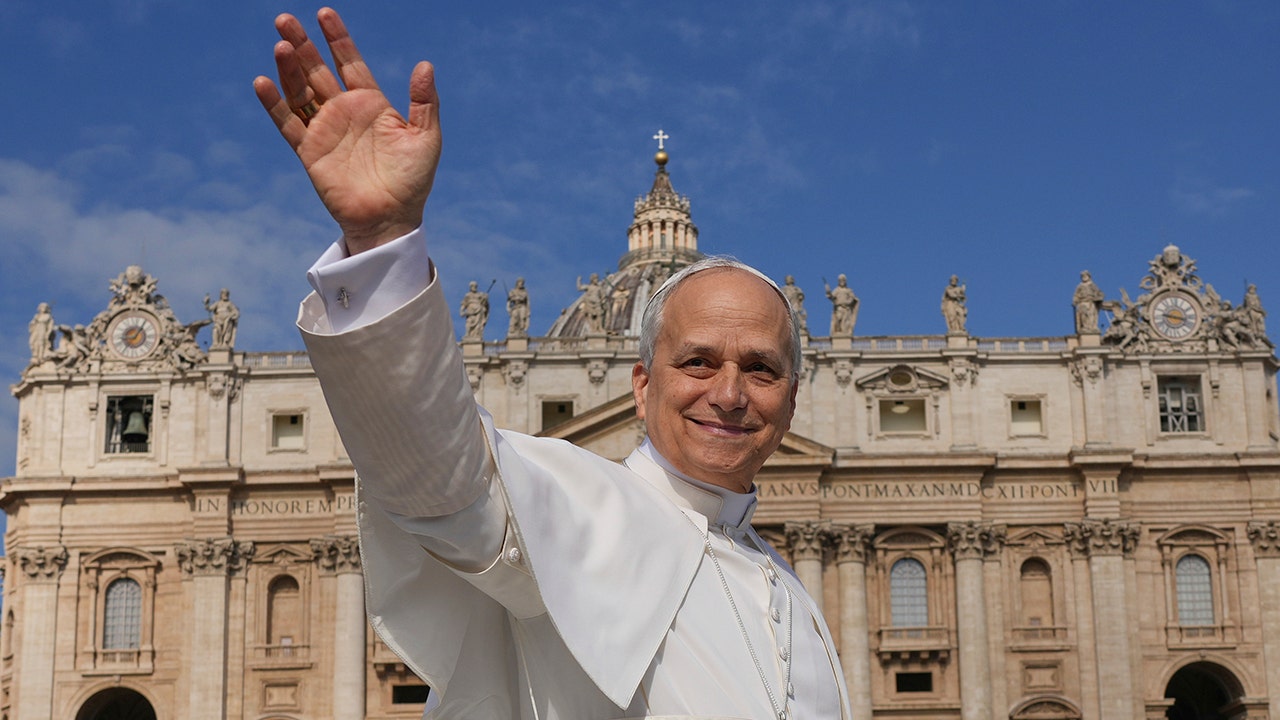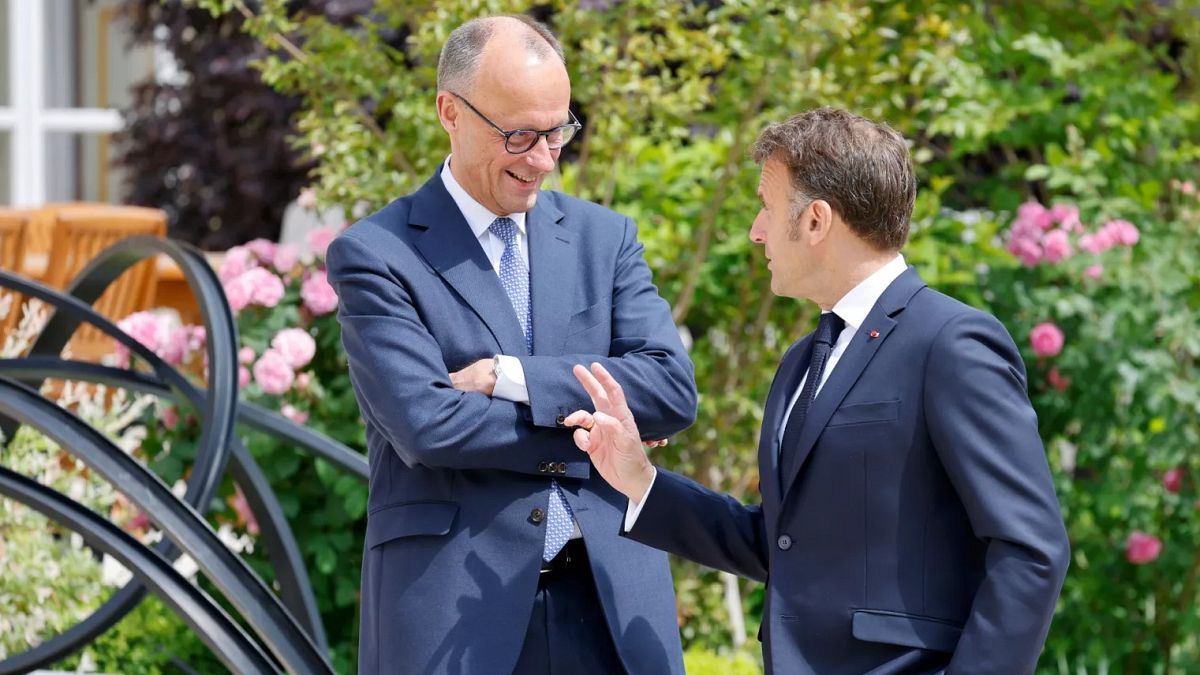World
Photos: Italian goalkeeper Gianluigi Buffon retires from football at 45

At age 45 and after a career that included a World Cup title with Italy, a long list of trophies with Juventus and many years when he was considered among the best goalkeepers in football, Gianluigi Buffon has announced his retirement.
Buffon had one season remaining on his contract with Parma in Serie B and therefore leaves the sport with the same team that he began his professional career with nearly three decades ago.
“That’s all folks! You gave me everything. I gave you everything. We did it together,” Buffon wrote on Instagram on Wednesday next to a video of his career highlights.
The pinnacle of Buffon’s career came during the 2006 World Cup, when he conceded only two goals during the seven matches of the Azzurri’s run to the trophy. Neither of those two goals were scored by opponents during open play. One was an own-goal by teammate Cristian Zaccardo and the other was a penalty kick by Zinedine Zidane during the final.
“I experienced Buffon for 25 years, first with Juve and then on the national team — his greatness as a player and as a man,” former coach Marcello Lippi said, adding that he thought Buffon should take a job with the national team.
At Juventus, Buffon was the backbone behind 10 Serie A titles and stayed with the club even after the 2006 “Calciopoli” scandal that saw the team relegated to Serie B. He helped the Bianconeri win the second division a year after the World Cup title.
“A legend hangs up his gloves today,” Juventus tweeted. “Your saves, your smiles, and your character will be forever remembered. Thank you, and congrats on an incredible career.”
Buffon and Juventus also had two Serie A titles taken away due to the “Calciopoli” match-fixing scandal.
The only big title missing from Buffon’s career was the Champions League, having lost three finals with Juventus — to AC Milan in 2003, to Barcelona in 2015 and to Real Madrid in 2017.
Buffon left Juventus for Paris Saint-Germain in 2018 only to return to the Turin club a year later as a backup to Wojciech Szczesny. He then made a sentimental return to Parma in 2021.
“Over the course of his illustrious career, which has no equals, Gigi showed an unrivalled ability, determination and passion on and off the field,” Parma President Kyle Krause said. “Parma will always be your home.”

World
Nicusor Dan Beats George Simion in Romana’s Presidential Election

In a setback for Europe’s surging nationalist forces, Nicusor Dan, a centrist mayor and former mathematics professor, on Sunday won the presidential election in Romania, defeating a hard-right candidate who is aligned with President Trump and has opposed military aid to Ukraine.
With more than 98 percent of ballots counted, preliminary official results gave 54 percent of the vote in the presidential runoff to Mr. Dan, 55, the mayor of Romania’s capital, Bucharest. His opponent, George Simion, a nationalist and fervent admirer of Mr. Trump who had been widely seen as the front-runner, drew only 46 percent.
As he slipped behind Mr. Dan in early counting, Mr. Simion told supporters that “we are the clear winners of these elections.” He called for national protests should the final count show him as the loser, railing against what he said was an attempt “to steal the victory of the Romanian people.”
Mr. Dan’s victory will likely calm fears in Europe’s political mainstream that Romania, which borders Ukraine and plays a vital role in defending NATO’s eastern flank against Russia, might join Hungary and Slovakia in opposing help for Ukraine and in cozying up to Moscow.
But it will likely inflame Romania’s nationalist camp and its supporters abroad, including Vice President JD Vance, and stoke accusations that the system is rigged. Last year, a Romanian court ordered a last-minute cancellation of a presidential election that an ultranationalist appeared well positioned to win.
In the final days of the campaign, as opinion polls showed the race tightening, Mr. Simion laid the groundwork for a Romanian version of Mr. Trump’s “stop the steal” efforts in 2020. He insisted that only electoral fraud could prevent him from winning.
On Sunday, shortly before voting ended, Mr. Simion claimed that “many deceased people” had appeared on electoral lists, echoing the claims of Mr. Trump after he lost the 2020 election in the United States. Mr. Simion provided no evidence to support accusations that his victorious rival had benefited from fraud.
A mathematics prodigy in his youth who earned a Ph.D. in France before becoming a professor in Bucharest, Mr. Dan campaigned as a moderate conservative committed to both the European Union, which Romania joined in 2007, and to NATO, which it has been a member of since 2004.
Though supported, at least tacitly, by much of Romania’s political establishment, Mr. Dan ran as an independent and presented himself as an outsider untainted by close association with Romania’s two main political parties. Those parties have cycled in and out of power since the 1989 overthrow of communist dictator Nicolae Ceausescu.
Mr. Dan began his public career campaigning against corruption and the destruction of old buildings by real estate developers tied to corrupt politicians. Both candidates were involved in rallies in the early 2000s to save Bucharest’s historic center.
But while Mr. Simion embraced nationalist politics, campaigning to “unite” Romania with the former Soviet republic of Moldova, which is largely Romanian-speaking, and bits of Ukraine inhabited by ethnic Romanians, Mr. Dan pursued a more moderate agenda.
Mr. Dan helped found the Save Romania Union, a liberal party, but split with it over the issue of same-sex marriage, which progressives in the party supported. When Romania, at the urging of right-wing activists, held a referendum in 2018 on changing the Constitution to prohibit same-sex unions, Mr. Dan urged his party to stay out of the issue. The referendum failed because of low turnout.
Leftists view him as a conservative and nationalists as a sellout to the European Union, but his victory on Sunday indicated that voters wanted a middle path between bitterly polarized political camps.
Campaigning this past week, he said voters had a choice “between a democratic, stable and respected Romania in Europe — and a dangerous path of isolation, populism and defiance of the rule of law.”
Andrada Lautaru contributed reporting from Bucharest.
World
Pope Leo XIV vows to work for unity, peace during inaugural mass

Pope Leo XIV spoke of unity and those suffering due to war during his inaugural mass in St. Peter’s Square.
The 69-year-old Augustinian missionary, who is the first American pope, spoke before 200,000 people on Sunday, Vatican News said.
“I would like that our first great desire be for a united church, a sign of unity and communion, which becomes a leaven for a reconciled world,” he said during his homily, the Associated Press reported.
“In this our time, we still see too much discord, too many wounds caused by hatred, violence, prejudice, the fear of difference, and an economic paradigm that exploits the Earth’s resources and marginalizes the poorest.”
POPE LEO SAYS FAMILY BASED ON ‘UNION BETWEEN A MAN AND A WOMAN,’ DEFENDS DIGNITY OF UNBORN
Pope Leo XIV holds Mass during the formal inauguration of his pontificate in St. Peter’s Square attended by heads of state, royalty and ordinary faithful, Sunday, May 18, 2025. (Alessandra Tarantino)
His call for unity was significant, given the polarization in the Catholic Church in the United States and beyond.
“In the joy of faith and communion, we cannot forget our brothers and sisters who are suffering because of war,” Leo said while praying the Regina Caeli, mentioning Gaza, Myanmar and Ukraine.
IN PICTURES: POPE LEO XIV ADDRESSES 150,000 FAITHFUL IN INAUGURAL MASS

Pope Leo XIV on his popemobile tours St. Peter’s Square at the Vatican prior to the inaugural Mass of his pontificate, Sunday, May 18, 2025. (Andrew Medichini)
The pope said he “strongly felt the spiritual presence of Pope Francis accompanying us from heaven.”
He concluded by inviting Catholics to pray to the Blessed Virgin Mary, under her titles as “Star of the Sea and Our Lady of Good Counsel,” to entrust his ministry.

Pope Leo XIV on his popemobile tours St. Peter’s Square at the Vatican prior to the inaugural Mass of his pontificate, Sunday, May 18, 2025. (Domenico Stinellis)
“We implore her intercession,” he said, “for the gift of peace, for support and comfort for those who suffer, and for the grace for all of us to be witnesses to the Risen Lord.”
Leo officially opened his pontificate by taking his first popemobile tour through the piazza, a rite of passage that has become synonymous with the papacy’s global reach.
The Associated Press contributed to this report.
World
Portuguese PM’s party set to win general election, fall short of majority

Portugal’s ruling centre-right Democratic Alliance (AD) is poised to win the most votes in an early parliamentary election, but is short of a full majority, exit polls have shown, paving the way for more political instability in the country.
Sunday’s election, the third in as many years, was called just one year into the minority government’s term after Prime Minister Luis Montenegro failed to win a parliamentary vote of confidence in March when the opposition questioned his integrity over the dealings of his family’s consultancy firm.
Montenegro has denied any wrongdoing, and most opinion polls showed that voters have dismissed the opposition’s criticism.
The election, also dominated by issues such as housing and immigration, follows a decade of fragile governments. And the only one of those governments to have a parliamentary majority collapsed halfway through its term last year.
Exit polls published by the three main television channels – SIC, RTP and TVI – put Montenegro’s AD as receiving between 29 percent and 35.1 percent of the vote, garnering the biggest share but again no parliamentary majority, similar to what happened in the previous election in March 2024.
Outside the polling station where Montenegro voted in the northern city of Espinho, Irene Medeiros, 77, told Reuters the “best candidate must win”, but that she feared more uncertainty ahead.
According to the exit polls, Montenegro’s main rival, the centre-left Socialist Party (PS), garnered between 19.4 percent and 26 percent of the vote, nearly tied with the far-right Chega party’s 19.5 percent to 25.5 percent share, which is higher than the 18 percent it won in 2024. Montenegro has refused to make any deals with Chega.
With that tally, the DA could get between 85 and 96 seats, short of the 116 needed for a majority in Portugal’s 230-seat parliament. It could form a minority government or forge partnerships with smaller parties to obtain a majority.
Most official results are expected by midnight (23:00 GMT).
For the last half century, two parties have dominated politics in Portugal, with the Social Democrats, who head the DA, and the PS alternating in power.
Public frustration with their record in government has fuelled the search and for growth of new alternatives in recent years.
“This campaign was very, very weak, had ridiculous moments, like clownish. Very little was spoken about Portugal within the European Union – it’s like we are not part of it,” teacher Isabel Monteiro, 63, told the Associated Press news agency in Lisbon, adding that she felt “disenchantment” with all parties.
Political scientist Antonio Costa Pinto said the new parliament would likely be similar to the last, and it was impossible to predict how long the government would last, as it depended on factors ranging from the international situation to the AD’s ability to reach deals with other parties.
“The only doubt is whether the AD will form a new minority government … or whether it will form a post-electoral coalition with IL, even if this coalition does not guarantee an absolute majority,”, referring to the pro-business Liberal Initiative (IL) party, according to Reuters.
Shortly after casting his own ballot, Montenegro told reporters he was confident stability could be achieved.
“There is a search for a stable solution, but that will now depend on [people’s] choices,” he said.
A second consecutive minority government in Portugal would dash hopes for an end to the worst spell of political instability in decades for the European Union country of 10.6 million people.
For the past 50 years, two parties have dominated politics, with the Social Democrats, who head the DA, and the Socialist Party alternating in power.
-

 Austin, TX1 week ago
Austin, TX1 week agoBest Austin Salads – 15 Food Places For Good Greens!
-

 World1 week ago
World1 week agoNew German chancellor aims for stronger EU ties with France and Poland
-

 Technology1 week ago
Technology1 week agoThe best iPad to buy
-

 News1 week ago
News1 week agoJudge Orders Release of Rumeysa Ozturk, Tufts Student Detained by ICE
-
Indiana1 week ago
Star-filled roster for Team Indiana at Saturday’s Prep Ball Stars Midwest Challenge
-

 News1 week ago
News1 week agoTrump cuts tariffs on U.K. cars, steel and aluminum but keeps 10% base duty
-

 Business1 week ago
Business1 week agoA Decade-Long Search for a Battery That Can End the Gasoline Era
-

 Lifestyle1 week ago
Lifestyle1 week agoA Guide to Bravo’s New Shows, Including “Wife Swap: The Real Housewives Edition”

















